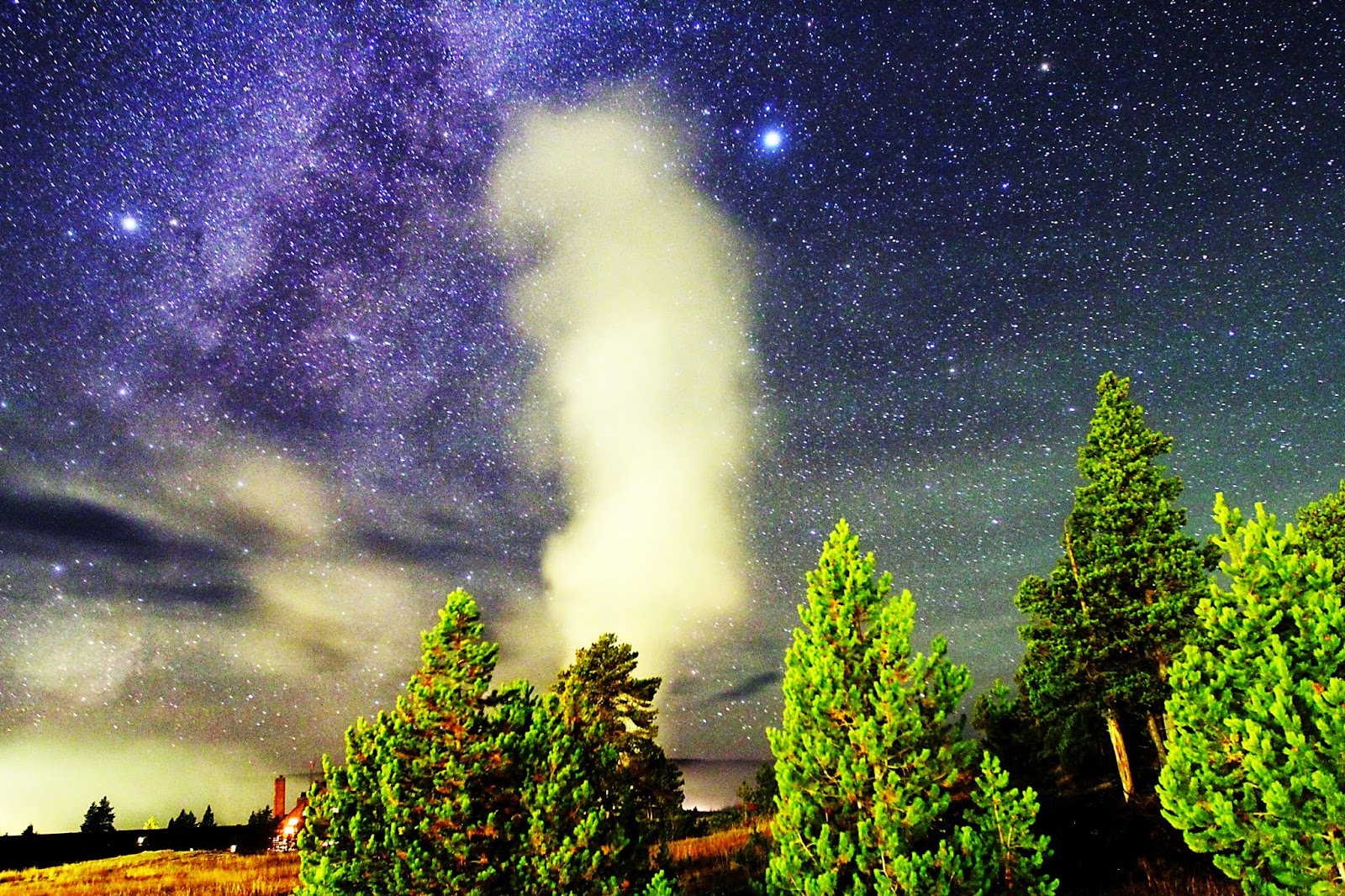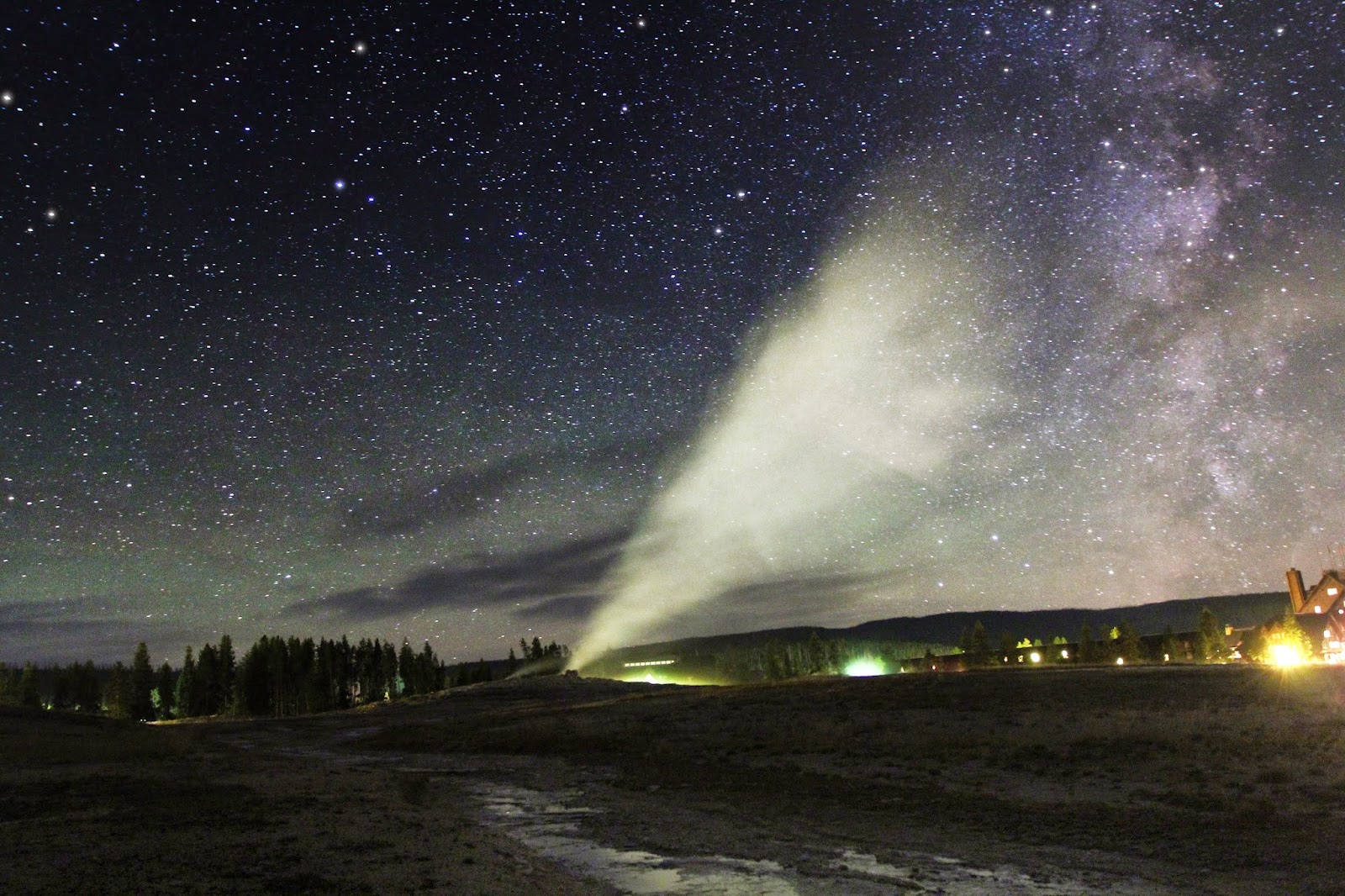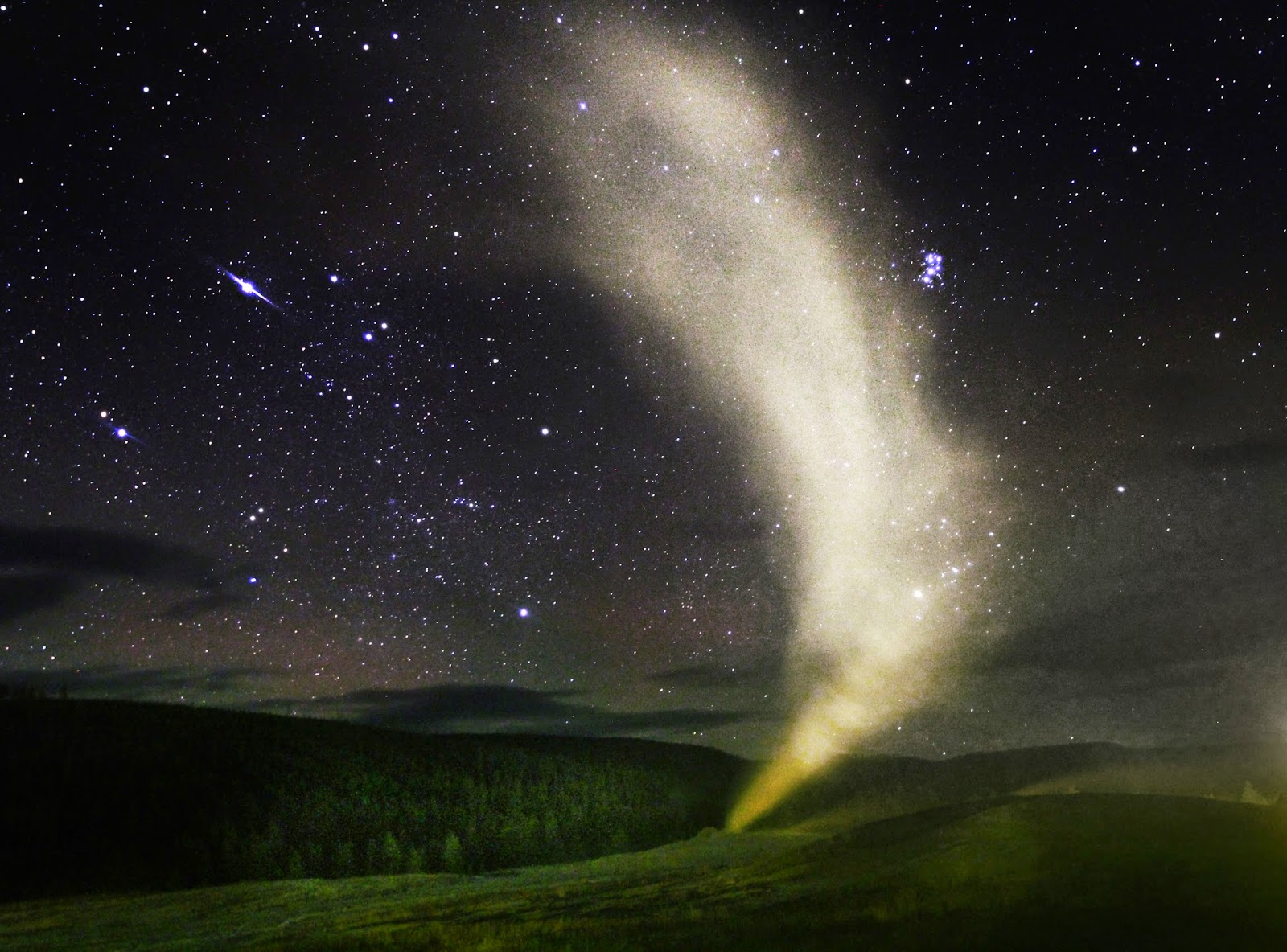One more photo from Yellowstone National Park trip - Eruption of Old Faithful Geyser. Eruption was so strong that take most space on photo with wide angle lens. Dew was so big after eruption that it took some time to heat the lens to start photography again after that photo.
 |
| Yellowstone Night Landscape Geyser eruption Canon 60Da |
Camera Canon 60Da; Wide Angle Lens EF16-35mm f/2.8L II USM; Exposure 30.0 sec; f/2.8; ISO 4000
 |
| Yellowstone Geyser eruption and the Milky Way |
Camera Canon 60Da; Wide Angle Lens EF16-35mm f/2.8L II USM; Exposure 30.0 sec; f/2.8; ISO 4000
 |
| Yellowstone night sky Geyser astrophotography Canon 60Da |
Camera Canon 60Da; Wide Angle Lens EF16-35mm f/2.8L II USM; Exposure 15.0 sec; f/2.8; ISO 3200
 |
| Yellowstone night photography - black and white - Old Faithful Geyser |
Camera Canon 60Da; Wide Angle Lens EF16-35mm f/2.8L II USM; Exposure 30.0 sec; f/2.8; ISO 4000
 |
| Milky Way Galaxy Over Yellowstone National Park Starry night Sky Astrophotography Canon 60Da |
|
Camera Canon 60Da; Wide Angle Lens EF16-35mm f/2.8L II USM; Exposure 30.0 sec; f/2.8; ISO 4000
 |
| Yellowstone Park Milky Way Galaxy Geyser Airglow Night Sky Landscape Astrophotography |
Camera Canon 60Da; Wide Angle Lens EF16-35mm f/2.8L II USM; Exposure 30.0 sec; f/2.8; ISO 3200
 |
| Yellowstone eruptions and Pleiades seven sisters M45 Astrophotography |
Camera Canon 60Da; Wide Angle Lens EF16-35mm f/2.8L II USM; Exposure 15.0 sec; f/2.8; ISO 3200
 |
| Pleiades and geyser Yellowstone night starry sky landscape Canon 60da |
 |
| Yellowstone starry night astrophotography Canon 60Da |



















%2B%2BGrand%2BTeton%2BNightscape%2BAstrophotography%2BCanon%2B60Da.jpg)





